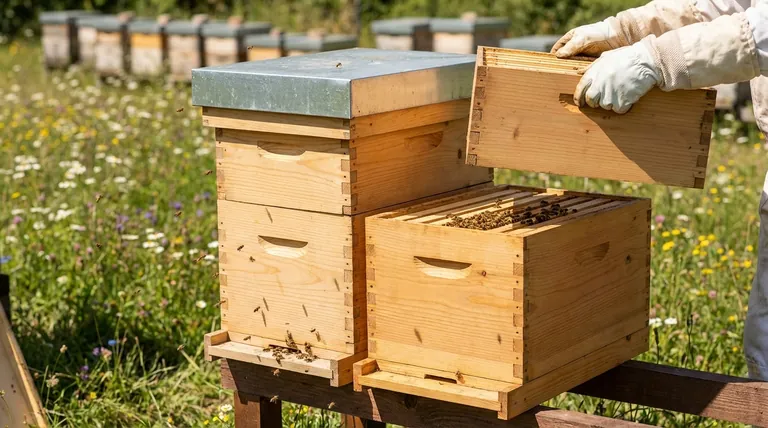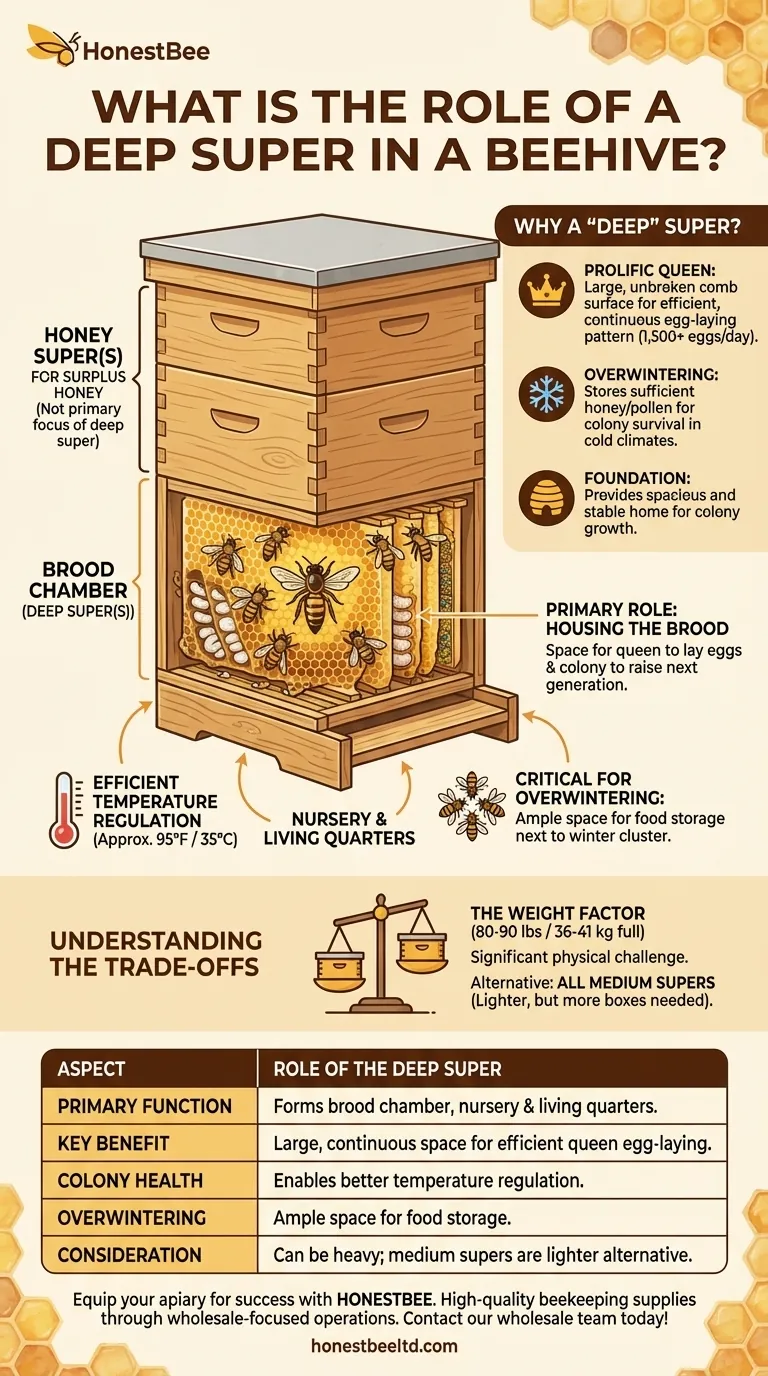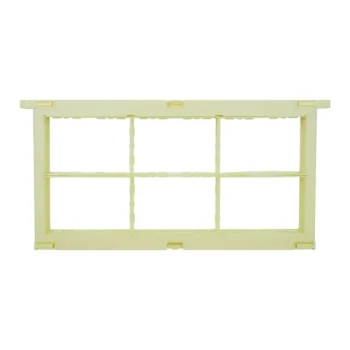At its core, a deep super is the foundation of the beehive. It is one of the large, standard-sized boxes that holds the frames where bees build their comb. In most common hive setups, one or two deep supers are stacked to create the brood chamber, which is the nursery and living quarters for the entire colony.
While beekeepers collect surplus honey from smaller boxes called "honey supers," the deep super's primary role is not for human consumption. Its purpose is to provide the essential space for the queen to lay eggs and for the colony to raise the next generation of bees, ensuring its long-term survival.

The Foundation of the Hive: The Brood Chamber
To understand the role of a deep super, you must first understand the concept of the brood chamber. This is the heart of the colony.
What is a "Super"?
The term "super" is short for superstructure. In beekeeping, it refers to any box placed on top of the hive's bottom board.
While the term can apply to any box, it's most often used to distinguish between the lower boxes for the bees (brood chamber) and the upper boxes for honey collection (honey supers).
Defining the Deep Super
A deep super is simply the largest standard-sized box available for a hive. It holds 8 or 10 "deep" frames, which provide a large, continuous surface area for the bees to build comb.
Its Primary Role: Housing the Brood
The deep super's most critical function is to form the brood chamber. This is where the queen bee lives and lays her eggs.
Worker bees use the large frames within the deep super to build cells for raising larvae (the brood). They also store pollen and honey in this area to feed themselves and the developing bees.
Why a "Deep" Super Is Used for Brood
Using the largest box for the colony's nursery is a deliberate choice that supports the natural biology of honeybees.
Space for a Prolific Queen
A healthy queen bee can lay over 1,500 eggs per day. The large, unbroken comb surface provided by deep frames allows her to lay in an efficient, continuous pattern, which is essential for rapid colony growth.
Efficient Temperature Regulation
Developing brood must be kept at a consistent temperature (around 95°F or 35°C). A larger, more consolidated space like a deep super is easier for the worker bees to heat and maintain, ensuring the brood develops properly.
Critical for Overwintering
In colder climates, the colony's survival depends on having enough food stored to last the winter. A brood chamber made of two deep supers provides ample space for the bees to store the honey and pollen they need, right next to where the colony will cluster for warmth.
Understanding the Trade-offs
While the deep super is the standard for brood chambers, it comes with one significant consideration.
The Weight Factor
A deep super full of brood, pollen, and honey can easily weigh 80-90 pounds (36-41 kg). Lifting and inspecting these boxes is a significant physical challenge for many beekeepers.
The Alternative: Medium Supers
Because of the weight, some beekeepers choose to use all medium-sized supers for their hives, including the brood chamber. This standardizes equipment and makes each box much lighter and easier to handle.
The trade-off is that it requires more boxes to equal the space of a deep super, which can create horizontal breaks in the brood-rearing area.
Making the Right Choice for Your Apiary
Your choice of equipment should be based on your climate, physical ability, and beekeeping philosophy.
- If your primary focus is following a proven, traditional method, especially in a cold climate: Using one or two deep supers for the brood chamber is the most common and reliable setup for colony survival.
- If your primary focus is reducing heavy lifting or standardizing your equipment: Building your brood chamber from three medium supers is a viable alternative to two deeps.
Ultimately, the deep super’s role is to provide a spacious and stable home for the brood, which is the engine that drives the growth and long-term health of the entire colony.
Summary Table:
| Aspect | Role of the Deep Super |
|---|---|
| Primary Function | Forms the brood chamber, the nursery and living quarters for the colony. |
| Key Benefit | Provides large, continuous space for efficient queen egg-laying and brood rearing. |
| Colony Health | Enables better temperature regulation for developing brood. |
| Overwintering | Offers ample space for food storage adjacent to the winter cluster. |
| Consideration | Can be heavy (80-90 lbs) when full; medium supers are a lighter alternative. |
Equip your apiary for success with HONESTBEE. Whether you manage a commercial apiary or are a beekeeping equipment distributor, the right foundation is key to colony health and honey production. HONESTBEE supplies durable, high-quality beekeeping supplies and equipment through wholesale-focused operations. Let us help you build a stronger, more productive operation. Contact our wholesale team today to discuss your needs and request a catalog!
Visual Guide

Related Products
- Australian Langstroth Beehive Boxes for Beekeeping Wholesales
- Langstroth Honey Bee Box Hive Boxes for Different Depths
- Portable Bee Mating Hive Boxes Mini Mating Nucs 8 Frames for Queen Rearing
- Automatic Heat Preservation 6 Frame Pro Nuc Box for Honey Bee Queen Mating
- 5 Frame Wooden Nuc Box for Beekeeping
People Also Ask
- How many frames fit into a standard beehive box? Choose Between 8-Frame and 10-Frame Hives
- What other types of hives are available besides the Flow Hive? Explore Langstroth, Top Bar, and Warre
- Why might a beginner be advised to start with a Langstroth hive? Unlock a Supportive Beekeeping Ecosystem
- How many deep hive bodies should I use? The Standard for a Healthy, Winter-Ready Colony
- What are the sizes of supers available in a standard hive? A Guide to Deep, Medium, and Shallow Boxes



















